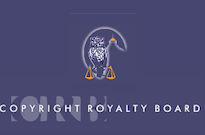 Yesterday in Washington, the Copyright Royalty Board (CRB) held an opening hearing to start the trial portion of Webcasting IV, the music royalty rate-setting process for the upcoming 2016-2020 royalty period. The royalty rates which will come out the other end of this process will determine how much money is paid to record labels and artists by non-interactive Internet radio outlets. The largest Internet radio company (by number of streams) is Pandora, one of the main litigants.
Yesterday in Washington, the Copyright Royalty Board (CRB) held an opening hearing to start the trial portion of Webcasting IV, the music royalty rate-setting process for the upcoming 2016-2020 royalty period. The royalty rates which will come out the other end of this process will determine how much money is paid to record labels and artists by non-interactive Internet radio outlets. The largest Internet radio company (by number of streams) is Pandora, one of the main litigants.
RAIN News talked to sources in the room during yesterday’s hearing. About that room — consensus is that a larger chamber would have served participants and observers better. One person at the scene described it as “a tiny room.” Broadcast law attorney David Oxenford answered our query about the reportedly miniature with more nuance: “The room was too small for the public session, as there were lots of analysts and other observers in the room. In the afternoon, for the closed session (when confidential information was provided), there was a little more room.” Oxenford said he expects the crowd of observers to winnow as the case proceeds.
The first-day hearing sets the table for the ensuing five-week trial period. Actually, the table settings have been laid down over several months of lengthy, detailed, and sometime combative written statements by Webcasting IV participants. All involved — the three CRB judges, all the participating companies, and observers who have been following along — know the polarizing talking points. Framing the debate are SoundExchange, which represents the labels, and Pandora, the market-leading Internet radio brand.
For RAIN analysis of core arguments, see:
“Openings were given by all the parties who are still participating,” said Oxenford. “SX and George Johnson (an individual songwriter/performer who is representing himself), for the copyright holders, and Pandora, iHeart, NAB, Sirius XM, IBS and the National Religious Broadcasters Noncommercial Music License Committee (NRB-NMLC) all making their own opening statements — splitting the time allotted to the services for an opening.”
Another source told RAIN News that four hours were alloted for opening statements by all the broadcasters and audio services.
SoundExchange offered this statement to RAIN News: “Yesterday, SoundExchange presented our opening statement in the Webcasting IV rate-setting proceeding. In our opening, we outlined the market evidence we plan to present to the Copyright Royalty Judges as they consider the appropriate rates to be paid by webcasters. SoundExchange is seeking a rate that treats artists and record labels fairly and recognizes the tremendous value that they contribute to digital music services today.”
David Oxenford said that yesterday’s hearing was like a roadmap, and noted that the trial proper begins immediately. “In the openings, each party summarized the main points as to which their witnesses will testify, and try to provide the judges a roadmap for their cases. The witness examinations start today, and the outlines provided yesterday will be filled in with the details on which the Judges will actually make their decisions.”
“There won’t be much fresh material,” one on-the-scene observer from the webcasting side told us. But cross-examination of expert witnesses (of which there are many) could provide more color that is possible in the written briefs where witness testimony was introduced.
Stay tuned — but don’t hold your breath. The end result, a declaration of new webcaster royalty rates, will probably not come until December.
